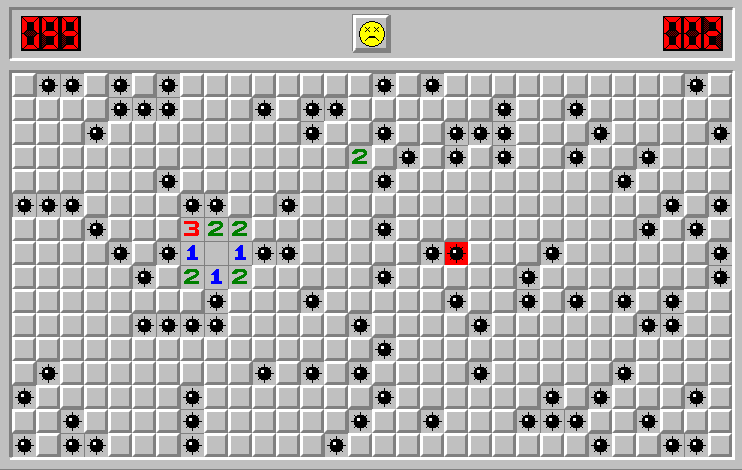Are you tired of randomly clicking squares in Minesweeper, hoping to avoid those pesky mines? It’s time to elevate your Minesweeper skills to the next level by understanding and utilizing strategic patterns. In this comprehensive guide, we’ll delve into the world of Minesweeper patterns and uncover how they can dramatically improve your gameplay. Whether you’re a novice or a seasoned Minesweeper enthusiast, mastering these patterns will undoubtedly enhance your strategy and lead you to victory.
What is Minesweeper Game?
The intricate world of Minesweeper patterns, let’s revisit the fundamentals of the game. Minesweeper is a classic puzzle game where players must uncover hidden mines on a grid-based board. Each square on the board either contains a mine or is safe to uncover. The objective is to clear the board without detonating any mines. Players use logic and deduction to determine the location of mines based on numeric clues revealed when uncovering adjacent squares.
The Power of Patterns
Minesweeper may seem like a game of chance, but experienced players know that strategic patterns play a crucial role in success. By recognizing and applying these patterns, you can make informed decisions that minimize risk and maximize efficiency. Let’s explore some essential Google Minesweeper patterns that can elevate your gameplay:
The Corner Strategy
Beginners often overlook the corners of the Minesweeper board, but they hold valuable information. Start by uncovering the corners, as they have fewer adjacent squares. If a corner square is safe, it provides valuable clues for adjacent squares, helping you uncover larger portions of the board with confidence.
The One-Square Rule
When faced with a square bordered by flagged mines and uncovered squares, apply the One-Square Rule. If the number revealed on the square matches the number of adjacent flagged mines, it’s safe to uncover the remaining adjacent squares. This rule minimizes guesswork and increases your chances of success.
The Chain Reaction
Creating a chain reaction is a powerful strategy in Minesweeper. When you uncover a safe square with a low number adjacent to flagged mines, it sets off a chain reaction of safe squares, allowing you to rapidly clear large sections of the board. Look for opportunities to trigger chain reactions and gain momentum in your gameplay.
The Border Sweep
As you progress through the game, focus on sweeping the borders of the board first. By clearing the perimeter, you create a buffer zone that reduces the likelihood of accidentally detonating mines in the center. This methodical approach sets a solid foundation for further exploration and ensures safer gameplay.
The Disjointed Clusters
Identifying disjointed clusters of numbered squares is a telltale sign of hidden mines. When you encounter clusters with numbers that cannot be satisfied by adjacent squares, strategically flag the potential mine locations. This technique helps you narrow down the possibilities and avoid costly mistakes.
Mastering Minesweeper
By incorporating these essential patterns into your Minesweeper strategy, you’ll gain a competitive edge and significantly improve your chances of success. Remember, practice makes perfect, so don’t be discouraged by initial setbacks. With patience and persistence, you’ll become a Minesweeper master in no time.
By understanding and utilizing strategic patterns, you can navigate the minefield with confidence and achieve victory. Whether you’re aiming to beat your personal best or compete against friends, mastering Minesweeper patterns will undoubtedly up your game and lead you to triumph.

I am really inspired with your writing skills as neatly
as with the structure on your weblog. Is this a paid subject or did
you customize it yourself? Anyway keep up the nice high quality writing,
it is rare to look a nice blog like this one nowadays. Instagram Auto comment!